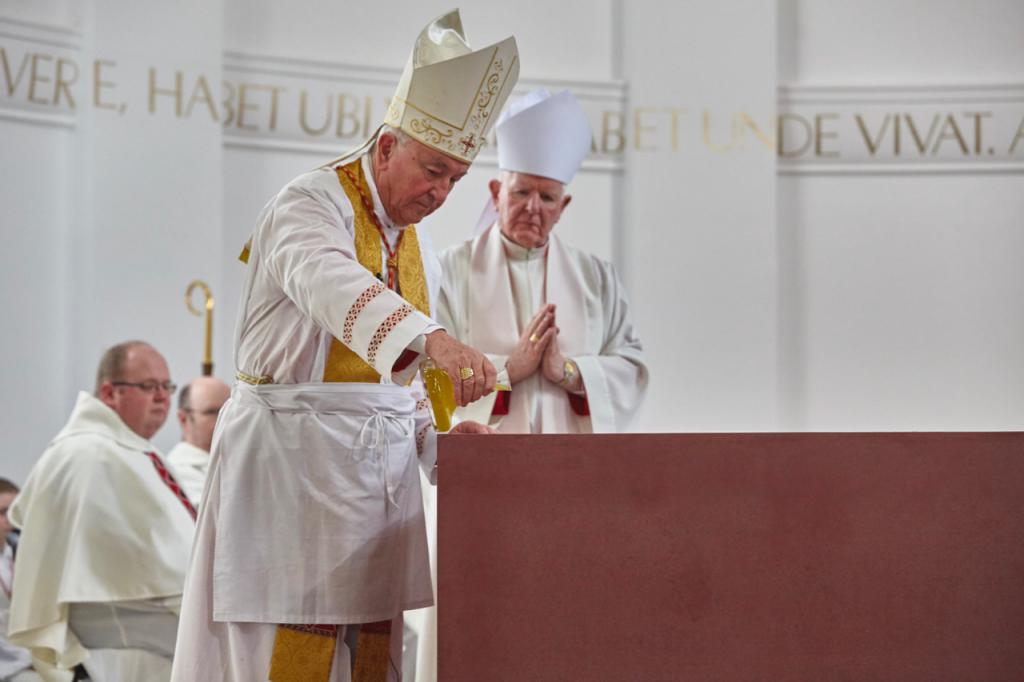A Mass of dedication of the new altar was celebrated by Cardinal Vincent at St Augustine’s Church, Hammersmith on Sunday 4th February. Among the concelebrants were Bishop Michael Campbell OSA, Parish Priest Fr Gianni Notarianni OSA, and Fr Provincial Prior Robert Marsh OSA. It marked the end of the first phase of the regeneration project of the church which establishes St Augustine’s as the new headquarters for the Augustinian Order in Britain. The first phase focused on the refurbishment of the church building.
The church was packed, with the congregation waiting in anticipation for the unveiling of the new altar. The procession of altar servers and priests solemnly entered with the relics of Ss Secundus and Constance on a velvet cushion. During Mass, Cardinal Vincent blessed the new baptismal font built at the entrance of the church, a link between baptism and an admission to the church, symbolically and literally.
The relics of the Ss Secundus and Constance from the old altar were replaced in a purpose-created cavity in the new altar stone which was then sealed. The altar was anointed by Cardinal Vincent with Chrism and blessed with incense in a large incense burner placed on the altar.
The parish has sought to reclaim the original qualities of the church building and give new forms of expressions to the sacred. In Fr Gianni’s words from the parish newsletter, ‘Altars are a bridge between heaven and earth…Roz Barr, the architect has delivered a church of renewed beauty… Julian Stair, ceramicist and maker of the altar, has helped focus attention on the celebration of the Eucharist as an offering of sacrifice as well as a communal meal.’ John Morgan, the typographer behind the texts around the church including the apse wall, has taken inspiration from St Augustine’s talk of Eucharist as the source of life.
After Mass, a reception was hosted in the Augustinian centre where Cardinal Vincent met with parishioners. Fr Gianni sincerely thanked Cardinal Vincent, Bishop Michael, fellow Augustinians, priests, and parishioners, through whose prayers and support, the extensive work was possible.




